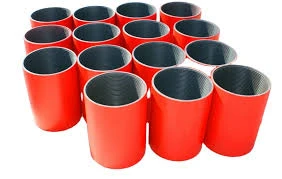- Afrikaans
- Albanian
- Amharic
- Arabic
- Armenian
- Azerbaijani
- Basque
- Belarusian
- Bengali
- Bosnian
- Bulgarian
- Catalan
- Cebuano
- Corsican
- Croatian
- Czech
- Danish
- Dutch
- English
- Esperanto
- Estonian
- Finnish
- French
- Frisian
- Galician
- Georgian
- German
- Greek
- Gujarati
- Haitian Creole
- hausa
- hawaiian
- Hebrew
- Hindi
- Miao
- Hungarian
- Icelandic
- igbo
- Indonesian
- irish
- Italian
- Japanese
- Javanese
- Kannada
- kazakh
- Khmer
- Rwandese
- Korean
- Kurdish
- Kyrgyz
- Lao
- Latin
- Latvian
- Lithuanian
- Luxembourgish
- Macedonian
- Malgashi
- Malay
- Malayalam
- Maltese
- Maori
- Marathi
- Mongolian
- Myanmar
- Nepali
- Norwegian
- Norwegian
- Occitan
- Pashto
- Persian
- Polish
- Portuguese
- Punjabi
- Romanian
- Russian
- Samoan
- Scottish Gaelic
- Serbian
- Sesotho
- Shona
- Sindhi
- Sinhala
- Slovak
- Slovenian
- Somali
- Spanish
- Sundanese
- Swahili
- Swedish
- Tagalog
- Tajik
- Tamil
- Tatar
- Telugu
- Thai
- Turkish
- Turkmen
- Ukrainian
- Urdu
- Uighur
- Uzbek
- Vietnamese
- Welsh
- Bantu
- Yiddish
- Yoruba
- Zulu
Understanding the Functionality of Coupling Tube Fittings in Fluid Systems
Understanding Coupling Tube Fittings A Comprehensive Guide
In various fields, ranging from plumbing to aerospace, the importance of proper fittings cannot be overstated. Among these, coupling tube fittings play a crucial role in ensuring fluid and gas systems operate efficiently. This article delves into what coupling tube fittings are, their types, applications, and how to select the right ones for your specific needs.
What are Coupling Tube Fittings?
Coupling tube fittings are devices used to join two or more tubes together. Typically made from materials like brass, stainless steel, or plastic, these fittings provide a tight seal, preventing leaks and ensuring the integrity of the fluid or gas being transported. They are available in various shapes and sizes, suited for diverse applications across multiple industries.
Types of Coupling Tube Fittings
There are several types of coupling tube fittings, each designed for specific applications and environments. Some of the most common types include
1. Straight Couplings These are the simplest type of fitting used to connect two tubes that are inline. Straight couplings are often used in simple plumbing applications, where the flow of fluid needs to be maintained without any changes in direction.
2. Elbow Couplings These fittings allow for a change in direction, typically at an angle of 45 or 90 degrees. Elbow couplings are essential in guiding tube systems around corners or obstructions, making them highly versatile.
3. Tee Couplings A tee coupling connects three tubes, allowing fluid or gas to flow in multiple directions. These are particularly useful in branching systems where flow needs to be diverted.
4. Cross Couplings Similar to tee couplings, cross couplings are used to connect four tubes, creating a cross-shaped junction. This type of fitting is less common but can be valuable in complex piping systems.
5. Union Couplings These fittings allow for easy connection and disconnection of two tube sections without having to cut or reshape the tubes. This feature is particularly useful for maintenance and repair tasks.
Applications of Coupling Tube Fittings
coupling tube fitting

Coupling tube fittings are employed in a variety of applications across multiple industries
- Plumbing In residential and commercial settings, coupling fittings are vital for connecting pipes in water supply and waste systems
. - Automotive These fittings are used in fuel and coolant systems, where reliable connections are essential to prevent leaks and ensure system efficiency. - Aerospace In the aerospace industry, coupling tube fittings are used in hydraulic systems, requiring high-performance and leak-proof connections to maintain safety and functionality at high altitudes.- Manufacturing Many manufacturing processes depend on precise fluid and gas delivery systems, making the role of coupling tube fittings fundamental in these operations.
Selecting the Right Coupling Tube Fittings
Choosing the right coupling tube fittings requires consideration of several factors
1. Material The material of the fitting should be compatible with the fluid or gas being transported. For example, corrosive substances may require stainless steel or specialized plastics to prevent degradation.
2. Size and Compatibility It's essential to select fittings that match the diameter of your tubes and are compatible with other components within the system.
3. Pressure Rating Ensure that the fittings can withstand the pressure of the system in which they will be used. This rating should be indicated by the manufacturer.
4. Temperature Rating Consider the operating temperature range of your application. Some materials can become brittle or deform at high temperatures, leading to failures.
5. Standards and Regulations Depending on the industry, certain standards and certifications may be required for fittings. Familiarize yourself with these regulations to ensure compliance.
Conclusion
Coupling tube fittings are an indispensable component in a multitude of systems across various industries. Understanding their types, applications, and the factors involved in their selection can make a significant difference in system efficiency and safety. By investing time in choosing the right coupling fittings, technicians and engineers can prevent leaks, reduce maintenance costs, and enhance the reliability of their fluid or gas systems. Whether for a simple plumbing project or a complex aerospace application, proper coupling tube fittings can make all the difference.
-
Tubing Pup Joints: Essential Components for Oil and Gas OperationsNewsJul.10,2025
-
Pup Joints: Essential Components for Reliable Drilling OperationsNewsJul.10,2025
-
Pipe Couplings: Connecting Your World EfficientlyNewsJul.10,2025
-
Mastering Oilfield Operations with Quality Tubing and CasingNewsJul.10,2025
-
High-Quality Casing Couplings for Every NeedNewsJul.10,2025
-
Boost Your Drilling Efficiency with Premium Crossover Tools & Seating NipplesNewsJul.10,2025







